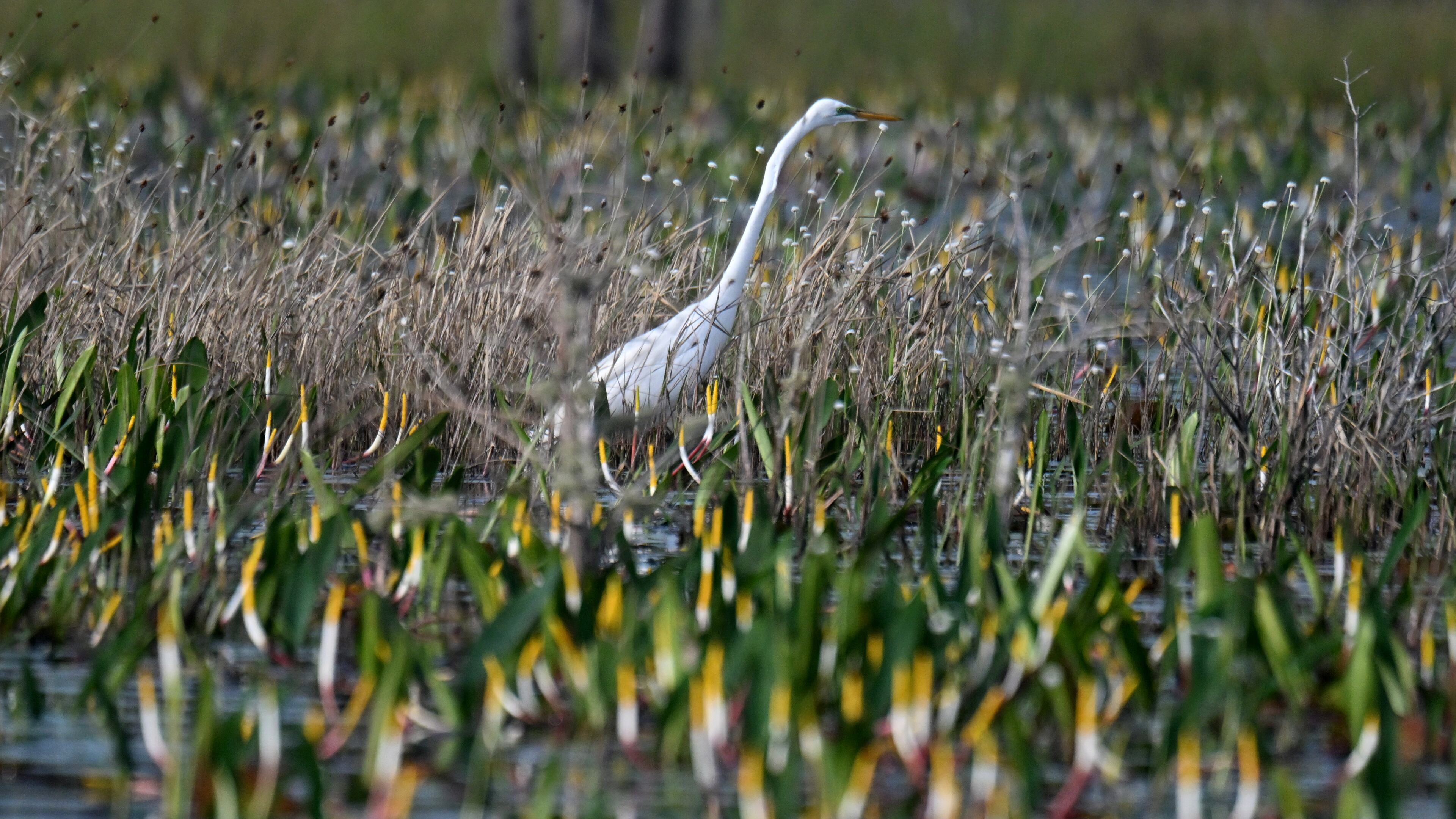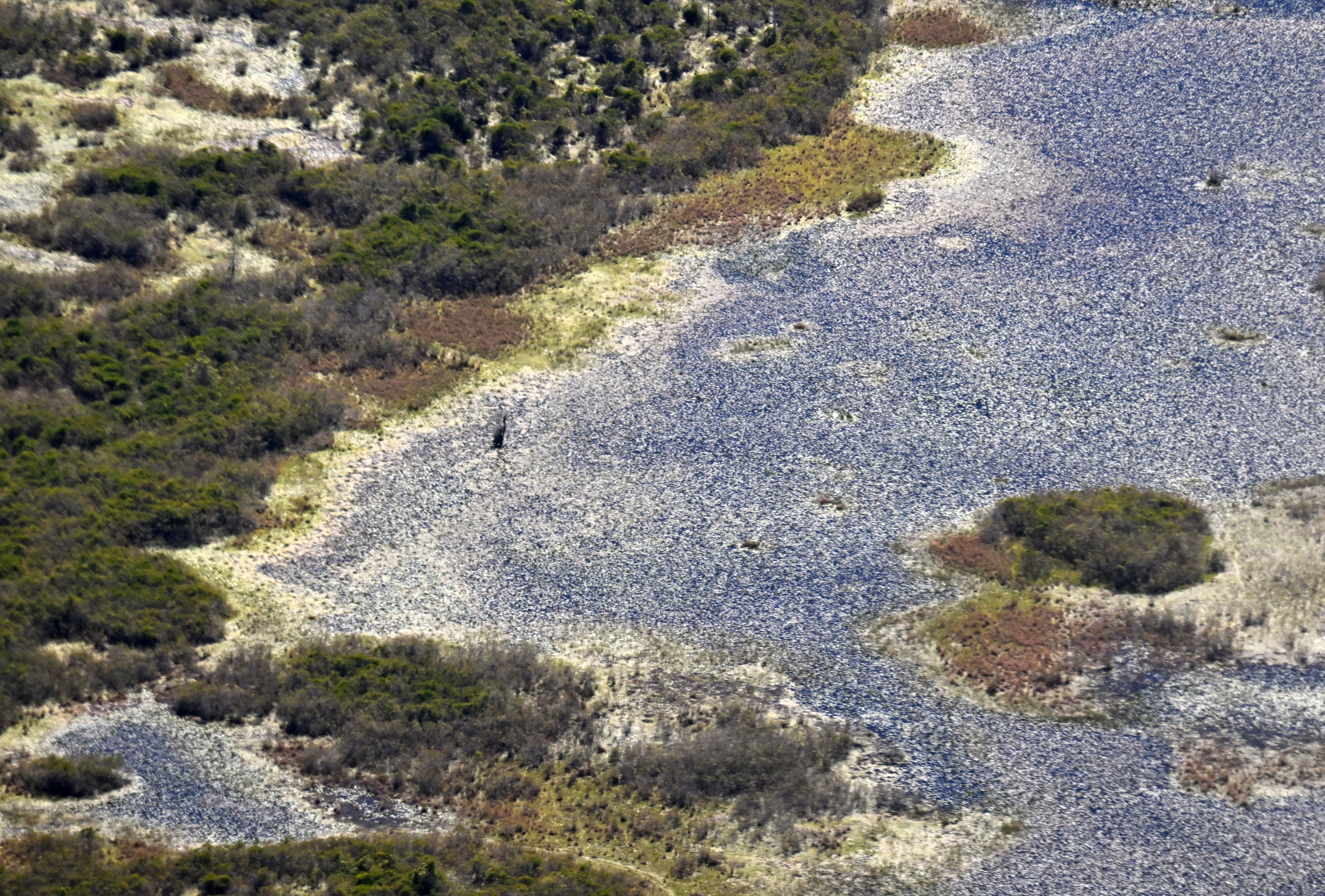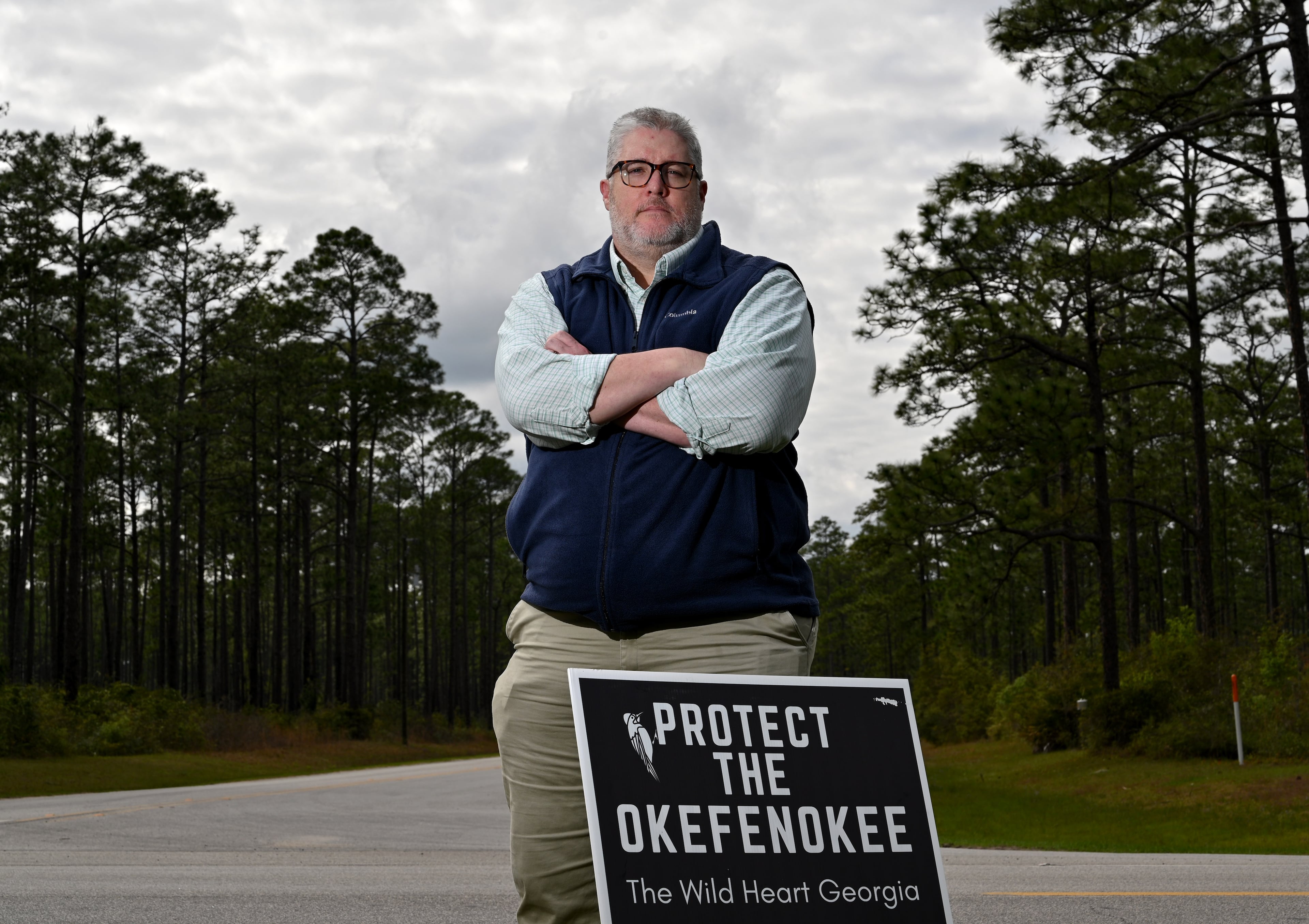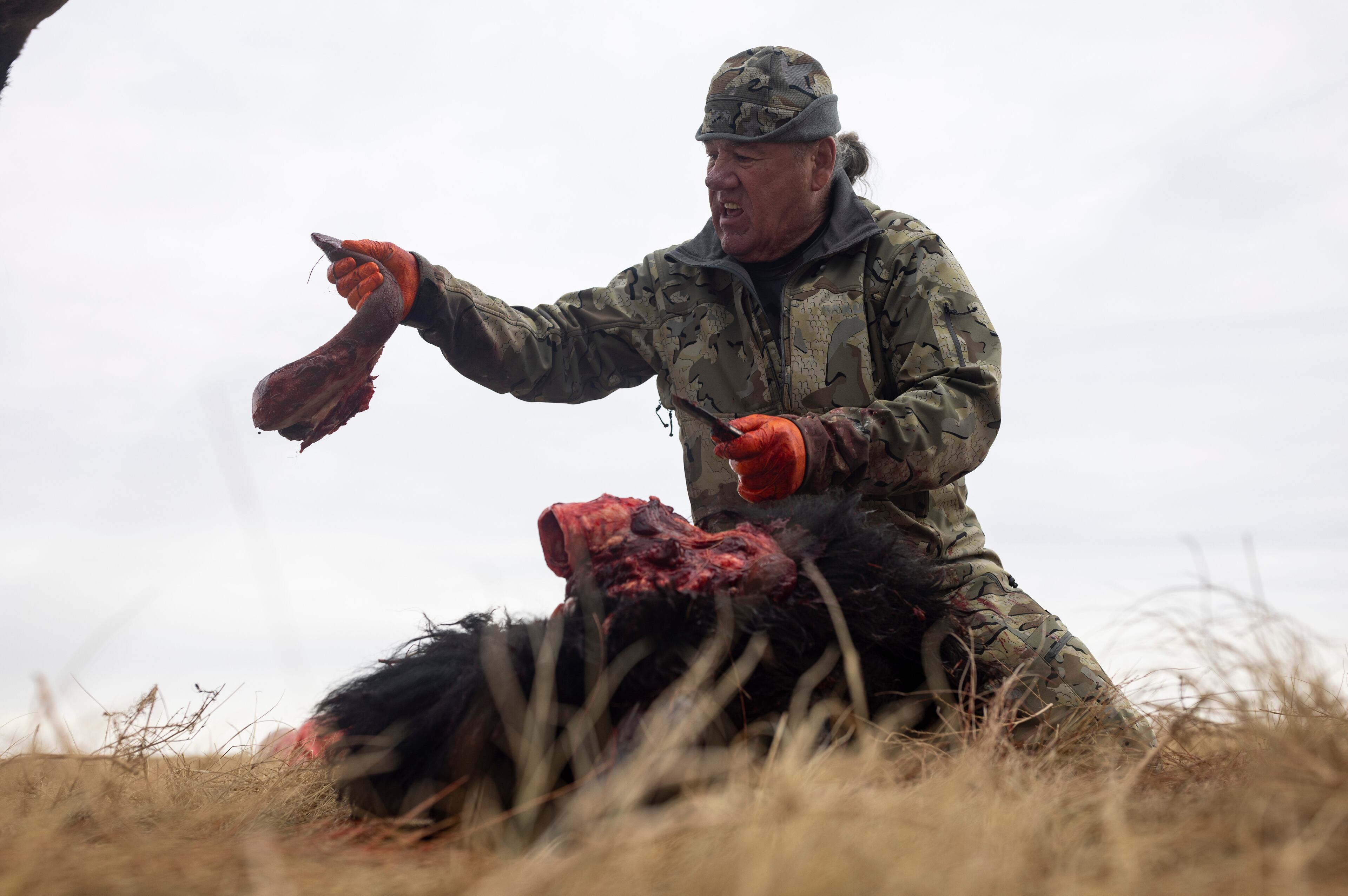How an unlikely coalition kept a mine away from Georgia’s Okefenokee Swamp

About a year ago, opponents determined to stop an Alabama company from mining next to Georgia’s Okefenokee Swamp were running out of options.
Georgia environmental regulators released draft permits in February 2024 that put the project on the verge of becoming reality. Soon after, efforts to delay the mine faltered at the state Legislature, which adjourned without passing any new protections for North America’s largest blackwater swamp.
By April of last year, it seemed little stood between the company — Twin Pines Minerals — and its quest to mine on the doorstep of what some have called Georgia’s Yellowstone.
But a determined coalition of environmental groups, scientists and outdoorsmen kept the pressure on Twin Pines, Georgia’s Environmental Protection Division and elected officials, buying precious time for a deal to develop, those involved say.
As negotiations to purchase the company’s land took shape behind the scenes, they were buoyed by the efforts of MAGA stalwarts, Georgia icons and a series of surprising recent events that all but crippled the project.

It all culminated on June 20 in a historic announcement of a $60 million deal brokered by The Conservation Fund to acquire the land Twin Pines planned to begin mining on, along with all of its other holdings near the fragile wetlands.
It halted the project and ended a development that scientists, environmentalists and other leaders worried could irreparably damage one of Georgia’s sacred sites.
Stacy Funderburke, who led negotiations for The Conservation Fund, said there’s no doubt the outpouring of support for protecting the Okefenokee helped their cause.
“The fact that was happening in the background did create space for us to try to negotiate a deal,” Funderburke said.
Twin Pines, through a spokesperson, declined to comment.
The Twin Pines deal has eliminated what many saw as the most immediate and dangerous threat, giving environmental advocates a critical chance to regroup before the next fight. Even so, new efforts to mine titanium sands near the Okefenokee could still emerge.
“It’s such an amazing place,” said Democratic state Rep. Debbie Buckner, one of the Legislature’s loudest voices opposing the mining project. “We don’t know what the future holds, but we sure do need to take care of it right now.”
‘A unique solution’
There aren’t many places left on Earth like the Okefenokee.
The swamp contains the 407,000-acre Okefenokee National Wildlife Refuge, the largest federal preserve of its kind east of the Mississippi River. It shelters an astonishing range of wildlife, from the iconic American alligator to threatened and endangered species like the red-cockaded woodpecker, indigo snake and wood stork. It also serves as the headwaters of two rivers and holds vast deposits of carbon-rich peat that help lock away millions of tons of planet-warming greenhouse gases.

Opponents of Twin Pines, bolstered by the analysis of scientists, feared the mine threatened all of that. Twin Pines insisted its modeling showed the project would not harm the swamp.
To address those fears, environmentalists have pressed for legislation to prevent the project from expanding, devising a bipartisan measure that would have blocked new mining on the swamp’s eastern edge. But despite strong support, the bill never reached a vote across three legislative sessions.
Capitol insiders whispered about why. Twin Pines executives had a long history of political donations and hired skilled lobbyists to fend off restrictions. And their promises of jobs and investment resonated in rural Charlton County, an impoverished slice of southeast Georgia near the Florida line where economic opportunities are scarce.
Mining opponents got little help from Gov. Brian Kemp, who stayed on the sidelines. He never backed restrictions on the mine or efforts to preserve the land around it, despite pressure from conservationists and warnings from federal officials.
From Kemp’s viewpoint, he didn’t want to interfere with the “independent” process overseen by the Environmental Protection Division, the state agency he controls. Nor was he enthusiastic about the idea of using state funds to buy private land to halt the mining.
“We are handling this permit like we would for any private sector landowner in our state,” he recently told The Atlanta Journal-Constitution. “I think it’s improper for a governor, any governor, to weigh in and say yes or no when we have laws on the books and processes.”
The showdown came to a head during last year’s legislative session.
Advocacy groups floated a last-ditch idea to buy more time: tweak an unrelated bill to stall the mine. House Speaker Jon Burns signed on.
A timber farmer by trade, Burns often tries to balance conservation with property rights. He backed a compromise: a three-year pause on new “dragline” mining permits, a method seen as particularly risky near the swamp — and the one Twin Pines had planned to use.
But even that effort failed. After rocketing through the House, the bill didn’t get a vote on the session’s pivotal, final day.
Even so, some conservationists weren’t heartbroken. The proposal had loopholes and left out other mining methods.
The failure convinced many advocates to shift strategy — and buy time for the private sector to step in.
Buckner, the state lawmaker, was among them. As it became clear the bill would falter, she and other legislators picked up the phone. If lawmakers couldn’t act, maybe major donors could.
“We’ve got to find another way,” she recalled thinking. “I don’t know who found the right people, but we all started making calls.”
Burns pledged after the session to keep pushing.
“There is no more important issue to any of us in Georgia, and certainly to me,” he told the “Politically Georgia” podcast shortly after the final gavel. “The Okefenokee Swamp is a critical national treasure not only to Georgia, but to the country.”
And he hinted at other plans afoot. He said conversations were picking up about protections from the “private side that certainly protect private property rights and are also environmentally sound that may help us work toward a unique solution.”
‘Not a risk we can take’
Even as the legislative path narrowed, the public campaign to halt the mine continued full steam ahead.
After draft permits for the mine were released early last year, EPD received more than 77,000 comments over a 60-day period. Nearly all opposed approval of the mine.
A virtual public meeting held around the same time also revealed the deep well of support the Okefenokee has in Georgia and across the U.S.
During that March 2024 meeting, fishermen, paddlers, geologists, educators, parents and grandparents spoke about the life-changing visits they’d enjoyed at the Okefenokee. Many feared those same experiences wouldn’t be available to future generations.

The overwhelming opposition to the mine had a tangible effect in slowing the project’s approval.
EPD spokesperson Sara Lips confirmed that the huge number of comments the agency received — many requiring detailed, technical responses — explained in part why the review of the mining permits took so long.
Josh Marks, a veteran of the opposition to Twin Pines and a proposal decades earlier by DuPont to mine near the Okefenokee, said both projects underestimated how beloved the swamp is by “Georgians of every age, race, religion and political party.”
“The Okefenokee is one of the world’s greatest natural treasures, and we Georgians are extremely protective of it,” Marks said.
One of the Okefenokee’s unlikely supporters stepped forward this spring: former Gov. Sonny Perdue.
Once a Trump Cabinet member and now Georgia’s higher education chancellor, Perdue rarely wades into political controversies these days. But for the Okefenokee, he made an exception.
In an April 17 letter, Perdue urged Interior Secretary Doug Burgum to back the Okefenokee’s nomination for the United Nations’ World Heritage List — a designation reserved for the planet’s most iconic natural sites.
Using Board of Regents letterhead, Perdue praised President Donald Trump’s support for rural economies and made the case that the swamp’s preservation could fuel sustainable growth.
He didn’t mention the mining project. But some said the subtext was unmistakable.
“Leaders across the political spectrum — including many Republicans — recognize the economic and environmental opportunities it presents,” he wrote. “By supporting this effort, we can ensure the Okefenokee’s legacy as a natural wonder while fostering growth and prosperity for the communities surrounding it.”
The message gave the conservation movement a political boost — and a high-profile MAGA-aligned ally with a direct line to Trump’s orbit. Suddenly, the “Save the Swamp” campaign had a MAGA standard-bearer.
“I don’t think the project could survive after Sonny weighed in,” said longtime Sierra Club lobbyist Neill Herring. “This was a court-of-public-opinion victory. I’ve never seen a single issue mobilize Georgians like this one.”
Other prominent voices were part of the chorus. One of them was Loran Smith, the legendary Bulldog sideline reporter and University of Georgia historian, who used his columns and megaphone to champion the swamp’s protection.
“I’m not a researcher but I can read. And when corporations are greedy, they don’t give a damn about the environment or anything else,” said Smith. “The chance that this could hurt the swamp is not a risk we can take.”
‘The ultimate goal’
Funderburke of The Conservation Fund first approached Twin Pines about a sale back in 2021, and the talks made little progress over the next two years.
But discussions kicked into high gear after the draft permits were unveiled in early 2024.
At first, negotiations were rocky. Charlton officials were worried about losing new jobs and investment. And people close to Kemp said he was concerned about setting a precedent if the state dipped into its coffers to buy the land.
But environmental groups continued their unrelenting drumbeat in opposition. At the same time, the company’s legal and financial problems were mounting.
Last summer, the AJC reported that Twin Pines and affiliates of its parent company had accumulated more than $1 million in settlements and fines for environmental infractions across multiple states since 2016. At one point, Twin Pines was also behind on hundreds of thousands of dollars in property taxes it owed to Charlton County.
Then, just weeks ago, the AJC reported that Twin Pines had failed to post a $2 million bond required by state regulators to move forward with the project. The April death of Raymon Bean, the owner of Twin Pines’ parent company, added another layer of uncertainty.
For the first time in years, Twin Pines seemed open to compromise — and conservation groups, backed by major donors, were ready.
The $60 million acquisition was brokered with the financial support of some of the country’s leading private philanthropies, including the James M. Cox Foundation and the Holdfast Collective, a nonprofit focused on environmental protection. Holdfast is funded by the outdoor apparel giant Patagonia. Jim Kennedy, the chairman of the James M. Cox Foundation, is chairman emeritus of Cox Enterprises, the AJC’s parent company.
Details on the rest of the funding for the deal are expected soon.
“This wasn’t an overnight success story. The stars aligned,” said Russ Pennington, a veteran Capitol insider who advised conservationists on their strategy. He said the model could be used as a template to secure other properties along Trail Ridge, the ancient line of sand dunes where Twin Pines and others have aimed to mine. “That’s the ultimate goal.”
For environmental groups, the end of the Twin Pines’ mine has led to a collective sigh of relief. But many say the fight to protect the swamp is far from over.
Tens of thousands of acres along the swamp’s eastern edge are still privately held. Many boast the same mineral-rich sands that piqued Twin Pines’ interest. And some of the largest tracts are owned by timber interests that have in the past explored allowing mining on their property.
Opponents of mining near the Okefenokee say they plan to shift their focus to securing agreements to protect those lands next.
Rena Ann Peck, executive director of the nonprofit Georgia Rivers and a longtime swamp ally, said this saga underscored the power of a persistent, united coalition.
“Sometimes it takes almost losing something to realize what you have,” Peck said. “Sometimes it takes a crisis to pull people together to save a valuable piece of nature and ourselves.”




